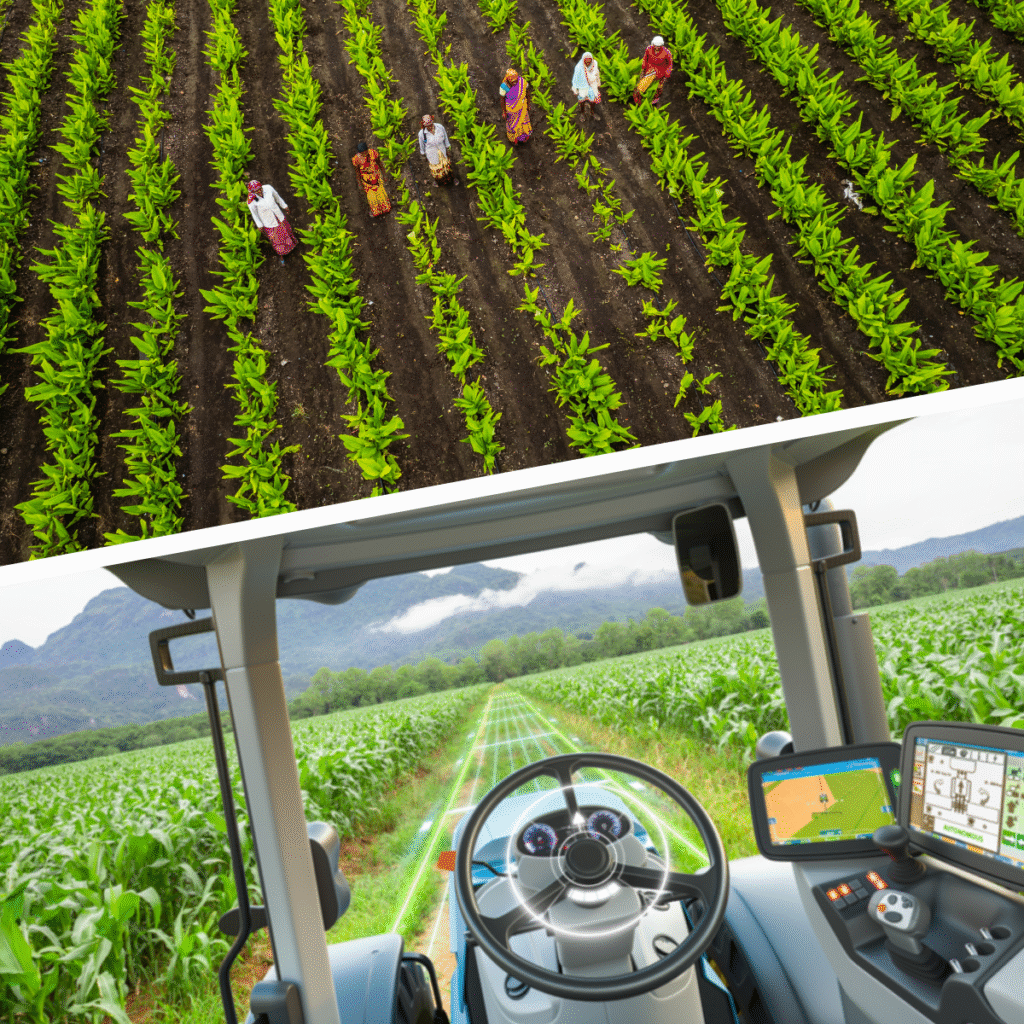

Close

By Giannis Fyrogenis, Project Manager at reframe.food
Precision farming is not about having the shiniest tech in the field. It is about using the right tools, in the right way, at the right time. A network of sensors. A digital map of the field. A robot that knows exactly where to go and how much to spray. It sounds futuristic, but it is already happening.Autonomous sprayers are a game changer. In one study, switching from manual spraying to a robotic system dropped operator exposure from more than 50 mL per hour to zero. No chemical residue on skin. No accidental inhalation. Just safer work for the people running the farm.
Then there are the environmental wins. Life Cycle Assessments show that precision practices can cut the impact on climate change by 15 percent and reduce water pollution by 16 percent compared to conventional approaches. Less runoff in streams, fewer chemicals drifting into neighboring fields, and cleaner groundwater for the communities nearby.And when it comes to efficiency, Variable Rate Technology (VRT) is rewriting the rules. In zones with high residual nutrients, farmers can dial back, sometimes all the way down to zero, on phosphorus fertilizers without losing yield. Less cost. Less waste. Same results.This is what precision farming really is: better decisions backed by real-time data. It is about control and confidence in a world where so many variables feel unpredictable.
The push toward precision farming did not come out of nowhere. It is a response to decades of farming methods that prioritized yield but often at a high cost to the people working the fields and to the environment around them.Spend time on a conventional farm and you start to see it. Early mornings loading sprayers. The chemical smell that lingers in clothes and hair. Long hours with tools that, despite safety gear, still expose workers to risks that accumulate over time.
Research has consistently shown that chronic exposure to pesticides and other agrochemicals can lead to serious long-term health problems. And the danger does not end at the farm gate. Pesticide residues travel home on boots and work clothes, creating what experts call “take-home exposure,” which studies have linked to reduced lung function in children, comparable to the impact of secondhand tobacco smoke (UC Berkeley, 2015).The economic pressures compound these risks. Rising costs for inputs like fertilizers and crop protection products, along with volatile market prices, create a cycle where farmers are often forced to balance efficiency with personal safety and environmental sustainability.
The shift to precision is not just technical; it is cultural and economic, too.Farms today look different. Laptops and drones are as common as soil probes and tractors. This means the skills needed are changing fast. A report from Purdue University points to a need for almost 60,000 new graduates every year in the U.S. with expertise in agriculture, technology, and natural resources. That is not a trend; that is a demand.
Consumers are shaping the change too. People want to know more about their food. In 2023, three out of four grocery shoppers said transparency from brands was a priority. And they are willing to pay for it. Studies show that products with verifiable sustainability labels command a 29.5 percent premium on average.
There are examples of companies where farmers earn a higher price for their produce, like milk, when they can prove they have cut greenhouse gas emissions. That kind of system rewards transparency and effort while showing consumers that change is not just talk, it is measurable.Precision farming is helping bridge this gap. When farms collect data and share it openly, trust builds. And with trust comes opportunity: stronger markets, stronger communities, and a clearer path toward a food system that balances profit with responsibility.
Smart Droplets has been putting these ideas to the test. In the orchards and fields where it runs, tractors steer themselves and sprayers prepare only the mix that is needed. No spare liquid sloshing in a tank. No one standing downwind of a chemical cloud.The effect on the land is just as clear. Data from sensors and digital twins decides how much to spray and where. Less drift into the air. Less runoff into streams. Cleaner soil and water with no loss in yield.The efficiency is built in. The system does not blanket the whole field. It adjusts on the go. Sometimes that means cutting back to almost nothing. Sometimes it means treating only a corner where pests are found.
And because tools only work when people know how to use them, the Smart Droplets Academy brings farmers and advisors into the process. They learn how to read the numbers and fold them into decisions they already make.Smart Droplets shows what precision farming looks like when it leaves the page and enters the field: safer for people, lighter on the land, and sharper in how every drop is used.

Precision farming is no longer a distant vision. It is already changing how food is grown, how resources are managed, and how safe the work can be. The tools are not perfect, and the transition is not simple, but the direction is clear.Smart Droplets is one of the clearest signs of that shift. It shows how technology can cut exposure for farmers, reduce pressure on soil and water, and still keep yields steady. It also shows that training and access matter just as much as machinery.The future of farming will not be decided by gadgets alone. It will be shaped in the fields, by people who know the land and now have new tools to work with it. Every droplet, every decision, every field: more precise, more responsible, and more sustainable.